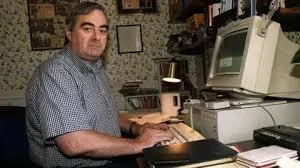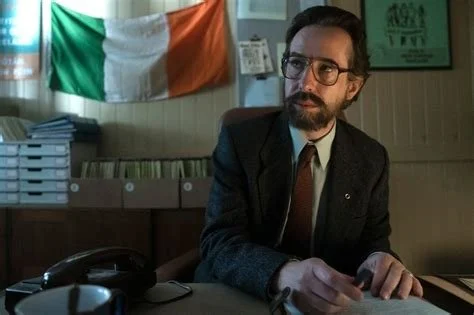Ed Moloney wrote the book that became Say Nothing
The first edition of Moloney’s book was published in 2002 in the wake of the signing of the Good Friday Agreement.
Say Nothing author Patrick Radden Keefe “stumbled across” a newspaper obituary of Dolours Price in January 2013 and thought reporting her IRA story would make a good magazine article.
A Secret History of the IRA author Ed Moloney fell in with Gerry Adams and Martin McGuinness in 1973 and knew writing their IRA story would make a great career.
Ed Moloney died in New York in mid-October. Lasting more than half a century, his career included covering and writing about the Troubles in the Six Counties and the peace agreement that ended them. His Secret History, published first in 2002 with an update in 2007, would become the best-selling account of the Troubles until Say Nothing was published in 2015. Moloney was 77.
Ed Moloney moved from NI to NY in 2000. A childhood polio victim, he wore leg braces all his life.
ED MOLONEY BUILT THE FOUNDATION FOR SAY NOTHING
After the Good Friday Agreement was signed in 1998, Moloney wanted to make sure the voices of those involved were heard and saved, so he launched the Belfast Project. Its oral history interviews with Dolours Price and Brian Hughes eventually became the essential primary source material of Say Nothing. In 2014 Moloney cooperated with Keefe and introduced him to the characters and complications of the Irish situation between 1972 and1998. Despite that, Moloney was critical of the book and television series. An American Reporter in Belfast: How a New Yorker Writer Got So Much Wrong in His Bestselling Book On The Troubles. Heads up. In this piece Moloney delves into the possibiity that Jean McConville - whose disappearance is the linchpin of Say Nothing - really was working with the British Army as a spy.
Keefe had this reaction to Moloney’s death. “I have great respect for Ed Moloney's work, as anyone who reads the portrait of him in my book will gather."
NORTHERN IRELAND. Belfast. 1971. A British soldier speaking with a young boy. Bruno Barbey
THE TRUE TOLL OF THE TROUBLES
Moloney pointed out in the 2007 edition of A Secret History how the warfare between Loyalists and Republicans, “devastated a whole society, scarring two generations of Irish people, the baby boomers...and their children, wo grew up knowing only instability and bloodshed.”
That might sound a bit melodramatic, but Moloney writes that while 3,700 people were killed during the 26 years of conflict – that's about two a day - “had a similar conflict consumed the United States, the equivalent death toll would have been over 600,000. Nearly 1 in every 50 of Northern Ireland’s 1.5 million people, some 30,000, were injured in the violence.”
Moloney had his critics. They contend that his Belfast Project was flawed from the beginning because only critics of the peace process and the IRA’s involvemen in it were interviewed. The Irish Echo ran one of the few criticisms of the tv series based on Moloney’s work. The interviewer Anthony “McIntyre thought the peace process was a sell-out, was embittered by Gerry Adams’ participation in it, and chose for his interview subjects those with similar views, most notably (Brendan) Hughes and (Dolours) Price, both central characters in the television series. Theirs was a minority view within the republican movement.”
The coffee shop on Falls Road in West Belfast where Gerry Adams buys his lattes.
Moloney’s high regard for Adams as a historical figure may surprise some people. “The Secret History of the IRA is as much about Gerry Adams as it is about the organization he dominated for so long. He is, indisputably, one of the largest figures in Ireland’s long and sad history, a revolutionary leader who deservedly ranks alongside those competing founders of Irish independence Michael Collins and Eamon de Valera.” (Emphasis added.)While the stories of those two men and their role in 1916 have been written thousands of times, Moloney said, he wanted A Secret History to show how Adams fought the war for peace behind the scenes and on two fronts: with his Unionist enemies and with his Republican friends who considered the process a sellout.
Gerry Adams said he didn't think much of Moloney’s A Secret History, calling it “a mixture of innuendo, recycled clips, nodding and winking”.
His second in command, Martin McGuinness used to call the author “Joe Baloney.”
Gerry Adams in Say Nothing





